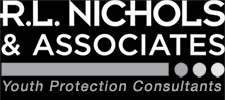Resources
Below are some useful resources your organization can use to increase the protection children and staff. If you have any questions about these or other resources, please contact us at [email protected].
Staff and Volunteer Screening
| Staff Screening Notebook (Nonprofit Risk Management Center) |
|---|
|
This book provides a practical framework for creating a comprehensive screening process for staff and volunteers. It is the updated version of NRMC’s Staff Screening Tool Kit, 3rd Edition |
| Recommended Guidelines and Best Practices: Background Screening in Youth-Serving Organizations, 3rd Edition (National Council for Youth Sports). |
|
This was developed with input from the National Center for Safety Initiatives, the NCYS-endorsed background check provider. |
| What You Need to Know About Background Screening (National Center for Missing and Exploited Children). |
|
These guidelines provide an in-depth look at the details that make up criminal background checks for staff and volunteers, as well as addressing other important steps in the screening process. Much of the information was derived from the findings of the U.S. PROTECT Act of 2003. |
Child Sexual Abuse Prevention
| Preventing Child Sexual Abuse within Youth Serving Organizations: Getting Started with Policies and Procedures (Centers for Disease Control and Prevention). |
|---|
|
This publication provides a framework and easily-understood strategies for youth-serving to prevent child sexual abuse. |
| Stewards of Children Training Program (Darkness to Light Foundation). |
|
Darkness to Light (D2L) has been a leader for almost two decades by providing low-cost, online and on-site training to increase awareness of child sexual abuse. D2L also funds research on child sexual abuse and makes this information available for free on their website. |
| Maryland Guidelines and Best Practices for the Design, Assessment and Modification of Physical Facilities and Spaces to Reduce Opportunities for Child Sexual Abuse (Interagency Commission on School Construction and The Maryland State Council on Child Abuse and Neglect). |
|
These are among the first guidelines developed by a state education department that specifically address how school design can prevent opportunities for sexual abuse at school. |
| K-12 Adult Sexual Misconduct Prevention Training Program (REMS-TA Center) |
|
The REMS-TA Center is operated under contract with the U.S. Department of Education, Office of Safe and Supportive Schools. It provides free, online training programs with certifications of attendance. |
| Minor Athlete Abuse Protection Program (U.S. Center for Safe Sport) |
|
The Minor Athlete Abuse Prevention Policy (MAAPP) addresses one-on-one interactions, social media and electronic communications, travel: local and team, locker rooms and changing areas and massages, rubdowns and athletic training modalities. |
| NetSmartz Online Safety Program (National Center for Missing & Exploited Children) |
|
This free program teaches online safety and digital citizenship to K-12 students, parents and educators. Originally created in the 1990s in partnership with Boys & Girls Clubs of America, it is one of the oldest online safety programs for youth. |
Violence and Crime Prevention
| Comprehensive Student Threat Assessment Guidelines (University of Virginia). |
|---|
|
The Comprehensive School Threat Assessment Guidelines (CSTAG) was originally known as the Virginia Student Threat Assessment Guidelines. It is an evidence-based model for conducting threat assessments in K-12 schools. CSTAG has been widely adopted nationwide and was recognized as an evidence-based program by the National Registry of Evidence-based Programs and Practices in 2013. |
| Safety and Security Guidelines for K-12 Schools (Partnership Alliance for Safer Schools) |
|
These guidelines provide a continuous improvement framework that allows schools to begin with a baseline of security strategies and then improve and integrate them over time, as resources permit. |
| Extreme Violence: Understanding & Protecting People from Active Assailants, Hate Crimes & Terrorist Attacks (Cognella Academic Publishing) |
|
This book provides a comprehensive treatment of critical knowledge needed to understand, prevent, prepare for and respond to catastrophic acts of violence. |
| Workplace Violence Prevention Program (U.S. Department of Labor). |
|
With approximately 1,000 workplace violence fatalities annually, the U.S. Department of Labor recognizes as a risk for all organizations and provides a framework for creating a workplace violence prevention program. |
Emergency Response
| K-12 School Emergency Management Planning (REMS-TA Center) |
| K-12 District Emergency Management Planning (REMS-TA Center) |
|
The REMS-TA Center is operated under contract with the U.S. Department of Education, Office of Safe and Supportive Schools. It provides free, online training programs with certifications of attendance. |
Bullying and Explotation
| Hostile Hallways: Bullying, Teasing and Sexual Harassment in School (AAUW Educational Foundation). |
|---|
|
This 2001 study of U.S. schools by Harris Interactive updates its earlier study from 1993 and shows the extent to which large numbers of students continue to be sexually harassed through bullying, teasing, or touching. |
| The Olweus Bullying Prevention Program (Clemson University) |
|
The Olweus Bullying Prevention Program is a comprehensive, school-wide program that involves the entire school community through interventions and classroom activities, changing the climate of the school and the social norms regarding bullying. |
| NetSmartz Online Safety Program (National Center for Missing & Exploited Children) |
|
This free program teaches online safety and digital citizenship to K-12 students, parents and educators. Originally created in the 1990s in partnership with Boys & Girls Clubs of America, it is one of the oldest online safety programs for youth. |
